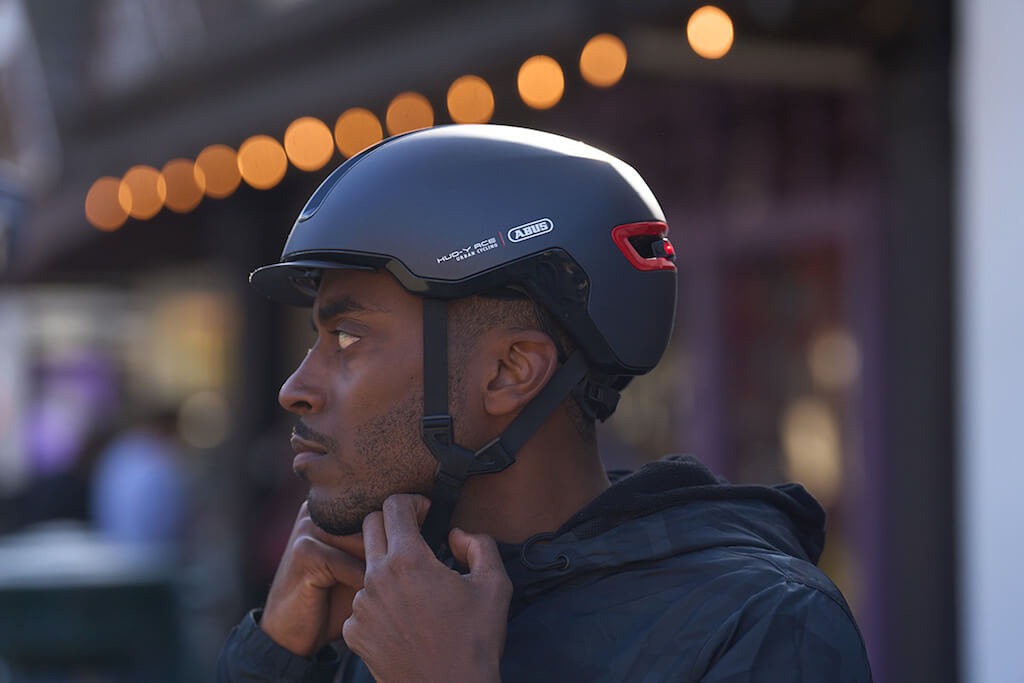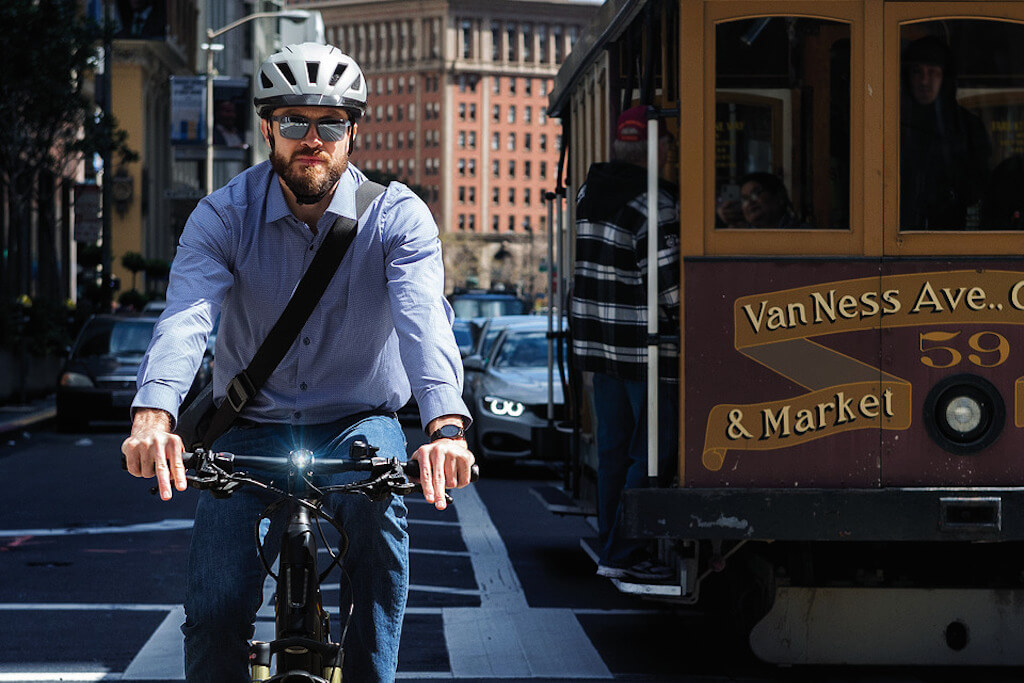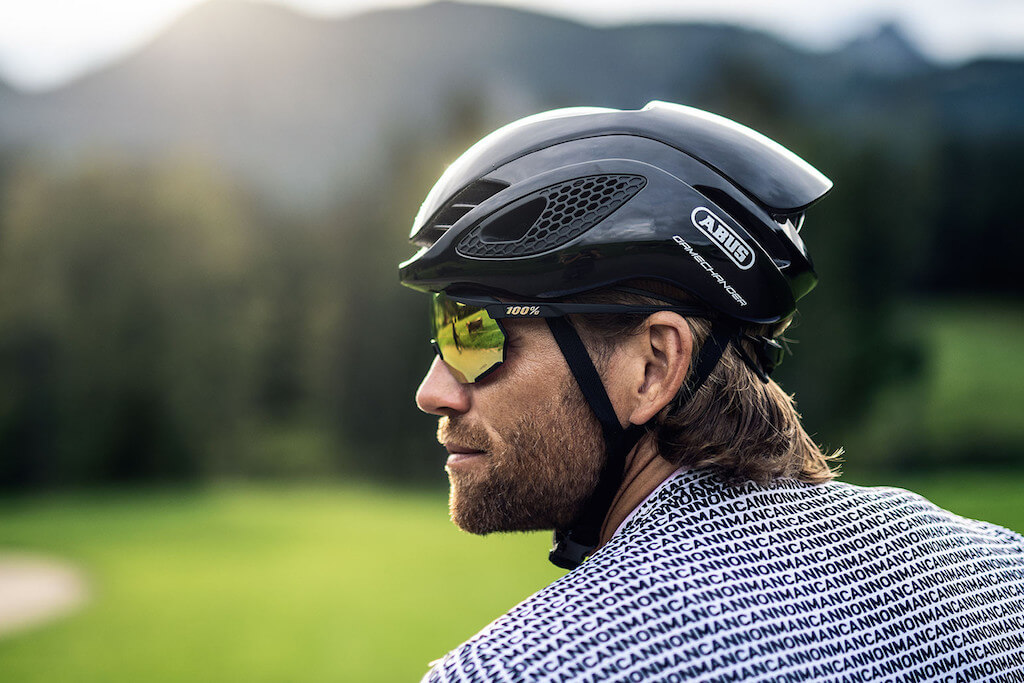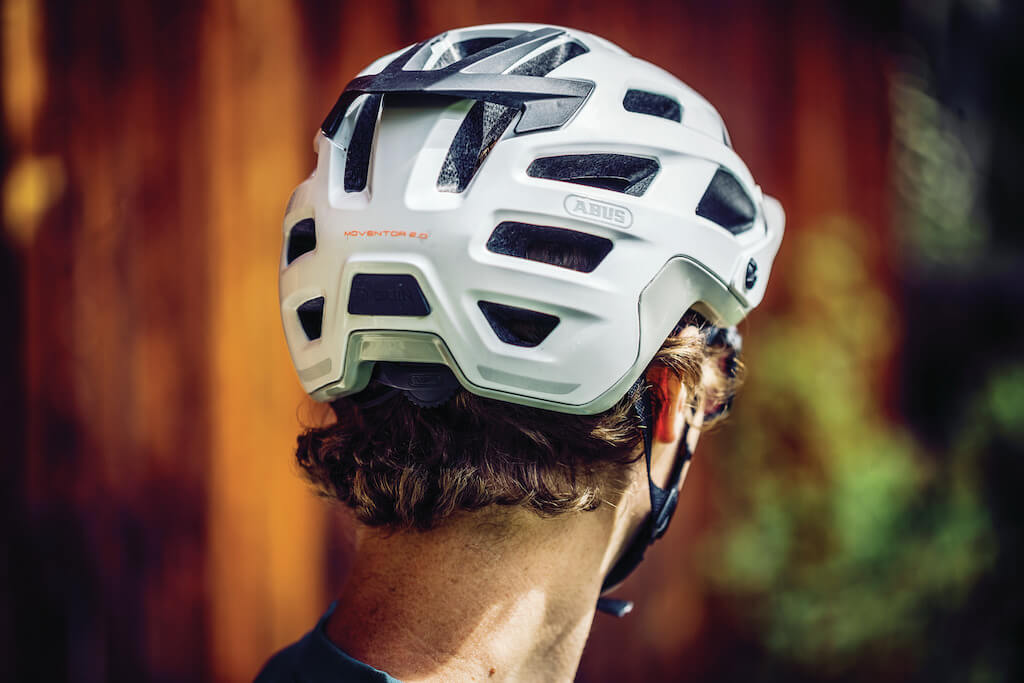Autumn Gear Guide
Find inspiration in our Gear Guide that will keep you out on your bike through wind or rain.
Download NowA bicycle helmet is an important part of any urban bike commuter’s essential items. In North America, most cyclists do not yet have a fully separated and protected network of bike lanes. Sure, it is changing, but unless one is lucky enough to live in San Francisco or Austin or Montreal, chances are it’s not […]
A bicycle helmet is an important part of any urban bike commuter’s essential items. In North America, most cyclists do not yet have a fully separated and protected network of bike lanes. Sure, it is changing, but unless one is lucky enough to live in San Francisco or Austin or Montreal, chances are it’s not quite there yet.
So, commuters must spend time alongside live traffic and take that risk, and when that happens, a helmet is important. And so is choosing the right helmet and making sure it fits properly.
A good helmet can help prevent an injury in the event of a crash by absorbing that impact energy and distributing it. Helmets do this by using a polystyrene foam that will compress and cushion when impacted thus distributing the force of that blow and lessening the damage. A hard shell is added to help protect in other ways.
The type of foam, the quality of the outer shell, and the retention system on the inside of the helmet all have a vital role to play.
On top of the essential protective elements of a helmet are layered additional features that can add general comfort or additional safety for specific cycling applications.
The first consideration when choosing a helmet is the type of use. For instance, if one is a road cyclist commonly going at faster speeds, for longer distances, a helmet with some aerodynamics and good ventilation is important whereas a bike commuter generally travels at slower speeds for shorter periods. Another important consideration is the likely impact area if an accident should occur.
Other things to consider when buying a helmet are sizing, shape, retention system and tightening mechanism.
A helmet should fit properly and snugly by using the chin strap and without utilizing the tightening mechanism, which adds another layer of comfort and security.
Here are our tips for choosing the right helmet for the right job.
Commuters are much different from, let’s say, mountain bikers. We travel at slower speeds for much of the time and don’t ride for great distances over a long period. And, if we have an accident, anything could happen; we could fall in any direction. To that end, a helmet for commuters should offer good overall protection of the head. There isn’t much consideration needed for aerodynamics or even ventilation. Of course, we do like a bit of style, and luckily urban cycling helmets offer a good variety.
What is ideal is something that offers great protection and durability. And, more and more urban cycling helmets also provide other features worthwhile for commuters such as integrated lighting, and some even fold up for easy storage in a pannier or messenger bag when not riding. Another feature from which commuters would greatly benefit is an integrated rain hood.

An example of a good commuter helmet is the ABUS HUD-Y, which is a very stylish helmet offered in some sweet shades. But it also offers the deep protection of a mountain bike helmet and features a rechargeable and magnetically attached rear LED light that gives off a nine lumens blast of light with four power modes. Other details of this helmet include a multi-position visor, magnetic buckle, as well as ABUS’s Zoom Ace Urban fit system.
E-bikes, on average, travel faster than regular bicycles. As a result, although e-bike riders often use standard bicycle helmets, something more protective and more focussed on broader coverage than a traditional helmet is ideal. This protection should be in addition to the best safety features afforded other commuter and road helmets such as MIPS, which protects against concussions.
For instance, the ABUS Pedelec 2.0 is a helmet that puts the safety of e-bikers front and centre. It complies with e-bike safety requirements in the Dutch Technical Agreement (NTA) 8776, it is constructed with shock-absorbing materials, is highly visible with reflectors and LED tail light, and goes to great lengths with various adjustments to create an ideal fit for wearers. It also comes with an integrated rain cover, which is a great feature for commuters. We’ve all been there.

In reality, the safety certification is specific to e-bikes that travel beyond the standard assistance speed limit of 25-30 kph, but a helmet with this much coverage and safety features is ideal for any e-bike rider.
Most people fly forward during a road bike crash, so helmets for this style of bike are designed with a lot of protection up front. Road bike helmets also pay close attention to weight, aerodynamics and ventilation since cyclists will be logging more miles and building up a lot of heat under that lid.

For instance, when aerodynamics is key for competitive cyclists and weekend warriors looking to get those personal bests, a helmet such as the ABUS Gamechanger hits that sweet spot with a special shape that reduces wind drag regardless of head tilt while maximizing ventilation through a sophisticated ventilation system. Other features include a glasses holder with a strap guide and aerodynamic FlowStraps. It weighs in at just 270 grams.
Unlike road biking, helmet protection for mountain biking is more full coverage of the head. Crashes can happen in all directions. The helmet protection extends down the temporal region for example, as well as further down the back of the head. The extra protection is key for a mountain biking helmet, as is ventilation. In addition, a visor at the front of the helmet to cut down on sun glare and tree branch whip.
An example of a mountain bike helmet is the ABUS Moventor 2.0 MIPS.

First, let’s explain MIPS, which is a new feature of many bicycle helmets. ABUS offers helmets with MIPS across its product lines. MIPS stands for multi-direction impact protection system. Essentially, it’s a low friction layer inside the helmet. When there is an impact, the hard outer shell is allowed to move slightly thanks to that layer. This reduces the severity of the impact on your head.
The Moventor is also super lightweight with plenty of ventilation and a deeper fit to offer increased protection, especially at the back of the head. It is also QUIN-ready (QUIN is a crash detection system that notifies designated contacts in the event of a crash) and comes equipped with a device to attach a pair of goggles. It weighs 330 grams.
Find inspiration in our Gear Guide that will keep you out on your bike through wind or rain.
Download Now
Leave a comment